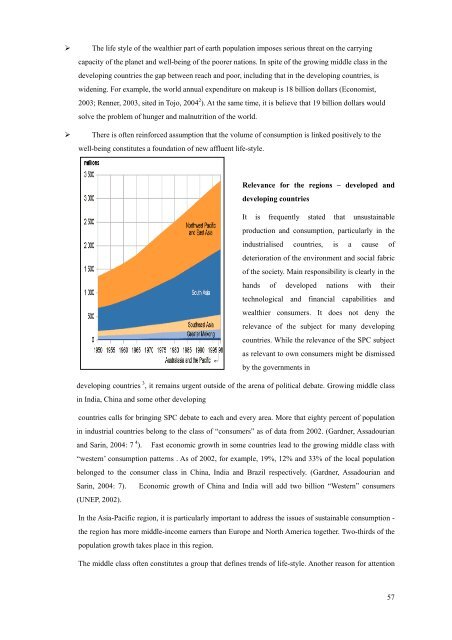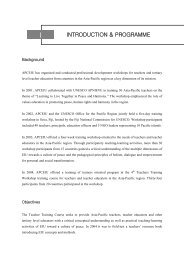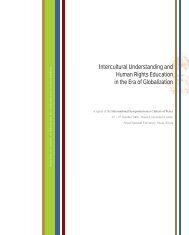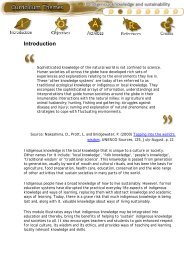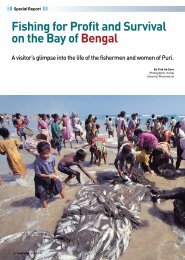REPORT OF UNESCO EXPERT MEETING ON - APCEIU
REPORT OF UNESCO EXPERT MEETING ON - APCEIU
REPORT OF UNESCO EXPERT MEETING ON - APCEIU
You also want an ePaper? Increase the reach of your titles
YUMPU automatically turns print PDFs into web optimized ePapers that Google loves.
‣ The life style of the wealthier part of earth population imposes serious threat on the carrying<br />
capacity of the planet and well-being of the poorer nations. In spite of the growing middle class in the<br />
developing countries the gap between reach and poor, including that in the developing countries, is<br />
widening. For example, the world annual expenditure on makeup is 18 billion dollars (Economist,<br />
2003; Renner, 2003, sited in Tojo, 2004 2 ). At the same time, it is believe that 19 billion dollars would<br />
solve the problem of hunger and malnutrition of the world.<br />
‣ There is often reinforced assumption that the volume of consumption is linked positively to the<br />
well-being constitutes a foundation of new affluent life-style.<br />
Relevance for the regions – developed and<br />
developing countries<br />
It is frequently stated that unsustainable<br />
production and consumption, particularly in the<br />
industrialised countries, is a cause of<br />
deterioration of the environment and social fabric<br />
of the society. Main responsibility is clearly in the<br />
hands of developed nations with their<br />
technological and financial capabilities and<br />
wealthier consumers. It does not deny the<br />
relevance of the subject for many developing<br />
countries. While the relevance of the SPC subject<br />
as relevant to own consumers might be dismissed<br />
by the governments in<br />
developing countries 3 , it remains urgent outside of the arena of political debate. Growing middle class<br />
in India, China and some other developing<br />
countries calls for bringing SPC debate to each and every area. More that eighty percent of population<br />
in industrial countries belong to the class of “consumers” as of data from 2002. (Gardner, Assadourian<br />
and Sarin, 2004: 7 4 ). Fast economic growth in some countries lead to the growing middle class with<br />
“western’ consumption patterns . As of 2002, for example, 19%, 12% and 33% of the local population<br />
belonged to the consumer class in China, India and Brazil respectively. (Gardner, Assadourian and<br />
Sarin, 2004: 7). Economic growth of China and India will add two billion “Western” consumers<br />
(UNEP, 2002).<br />
In the Asia-Pacific region, it is particularly important to address the issues of sustainable consumption -<br />
the region has more middle-income earners than Europe and North America together. Two-thirds of the<br />
population growth takes place in this region.<br />
The middle class often constitutes a group that defines trends of life-style. Another reason for attention<br />
57


